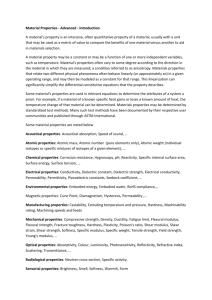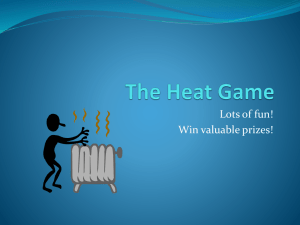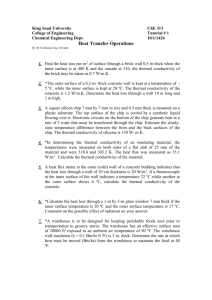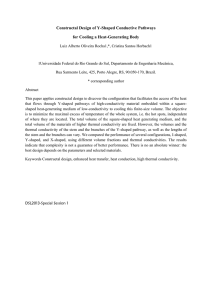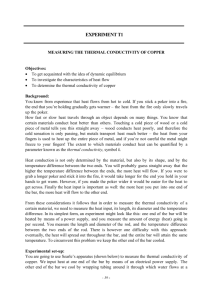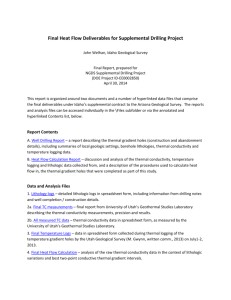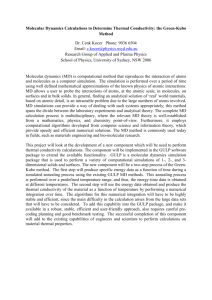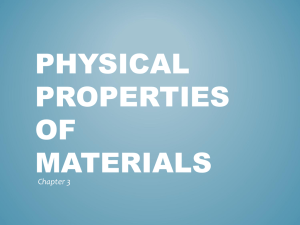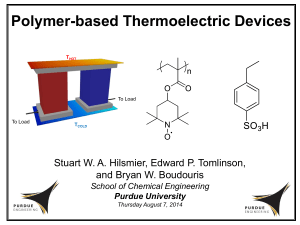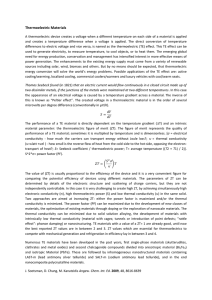Thermoelectric materials
advertisement
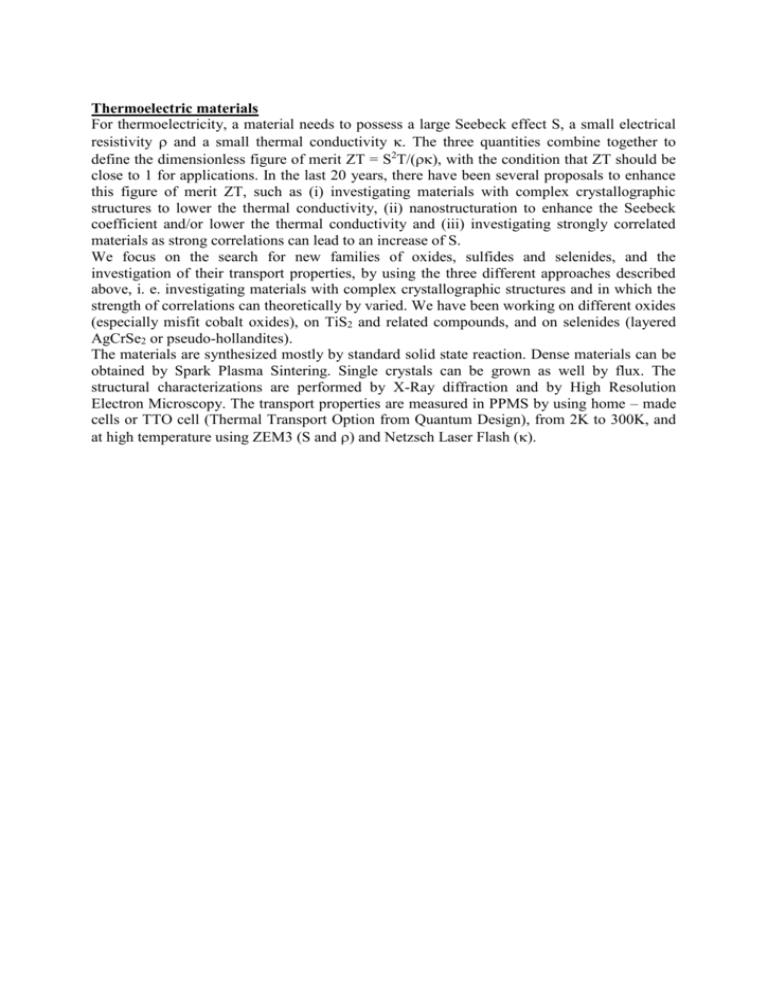
Thermoelectric materials For thermoelectricity, a material needs to possess a large Seebeck effect S, a small electrical resistivity and a small thermal conductivity . The three quantities combine together to define the dimensionless figure of merit ZT = S2T/(, with the condition that ZT should be close to 1 for applications. In the last 20 years, there have been several proposals to enhance this figure of merit ZT, such as (i) investigating materials with complex crystallographic structures to lower the thermal conductivity, (ii) nanostructuration to enhance the Seebeck coefficient and/or lower the thermal conductivity and (iii) investigating strongly correlated materials as strong correlations can lead to an increase of S. We focus on the search for new families of oxides, sulfides and selenides, and the investigation of their transport properties, by using the three different approaches described above, i. e. investigating materials with complex crystallographic structures and in which the strength of correlations can theoretically by varied. We have been working on different oxides (especially misfit cobalt oxides), on TiS2 and related compounds, and on selenides (layered AgCrSe2 or pseudo-hollandites). The materials are synthesized mostly by standard solid state reaction. Dense materials can be obtained by Spark Plasma Sintering. Single crystals can be grown as well by flux. The structural characterizations are performed by X-Ray diffraction and by High Resolution Electron Microscopy. The transport properties are measured in PPMS by using home – made cells or TTO cell (Thermal Transport Option from Quantum Design), from 2K to 300K, and at high temperature using ZEM3 (S and ) and Netzsch Laser Flash ().
